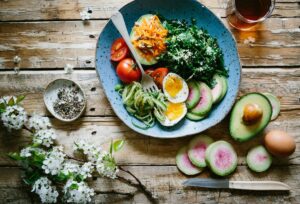Good Food Gone Bad
Here in the land of plenty, we have come to assume that nutritional deficiencies are a thing of the past. True, we aren’t lacking macronutrients; we get plenty of carbohydrate, protein and fat. However, that doesn’t ensure we aren’t falling short in some other areas.
Our grocery aisles are lined with man-made, highly processed “food-like substances” as Michael Pollan would say; foods that have been stripped of most nutrition. Food companies will often enhance these same foods with labratory-produced nutrients but it’s like replacing a hundred dollar bill with monopoly money; it may appear more or less the same but it’s just not worth as much. In addition to being void of some critical nutrition, most of the foods in the typical American diet are high in omega-6 fatty acids and low in omega-3’s, a combination known to aggrevate inflammation and possibly impact neurological function. Of course, what foods do most kids whose brains are still developing live on? Yup, you guessed it, those delicious, factory-produced foods loaded with artificial ingredients, corn products and soybean oil.
Last week, I attended a great seminar by well-known registered dietitian, Elizabeth Strickland, MS, RD who specializes in nutrition for autism. She makes a great case for how nutrition plays a large role in the cause and treatment of this growing epidemic. 1 in 88 kids (54 boys) is diagnosed with autism. There are a number of nutritional factors that likely play into this. Basicly, the combination of artificial foods, lack of essential nutrients, pesticides and other environmental toxins are wrecking havoc on our kids brains. All these artificial ingredients coupled with lack of protective nutrition create the perfect neurological storm. And what foods our kids get at school? Foods that are subsidized and approved by the USDA, the same organization that regulates the industry that produces the majority of our food-like substances.
Working with eating disorders, I’ve always aired on the side of liberal eating; incorporating ALL foods into the diet. I’ve informed clients that there are no “bad foods” and that everything fits. I’ve lived this way myself, in fact. In effort to help my kids shape a healthy, positive relationship with food and encourage them to take part in our social customs that revolve around food, I’ve been fairly permissive with (non)food. In fact, I will confess, a popular donut joint was a morning ritual during our kitchen renovation. To the point where we were all in withdrawal once the project was complete! I’m sure if you asked my son what his favorite foods are, he would answer donuts, cupcakes and pizza without hesitation. And who can blame him? They taste good. As humans, we’re programmed to like foods that are high in fat, sugar and calories because they yield more energy, hence survival.
On the flip side, I’ve also heard my toddler refer to grapes as treats and watched him beg for an apple or carrot stick. When offered the choice, many kids will opt for a healthier option, especially if it’s presented in an appealing way. Fruits and veggies are colorful and fun to eat and entirely worth the effort in preparation. Granted, there are kids out there who are pickier than most and they may need a more intensive intervention. A registered dietitian can certainly help with that.
Personally, I will continue to grapple with balancing my nutrition knowledge with the desire to maintain a flexible, enjoyable and inclusive relationship with food for myself and my family. I have no desire to uphold rigid “food rules” but also feel that no momentary pleasure from food is worth sacrificing my kids’ neurological function and the joys in life that come from that. Hopefully, I can help my kids and my clients navigate this tricky line as well.



